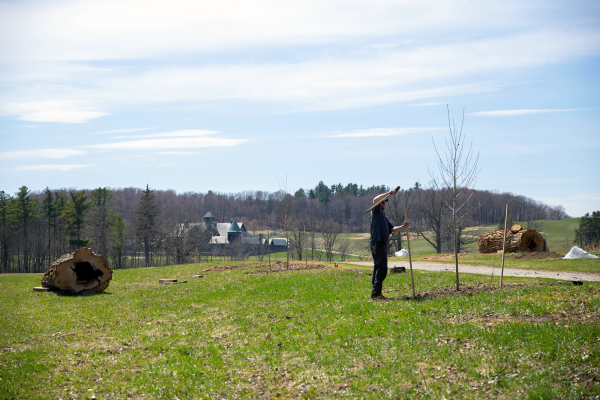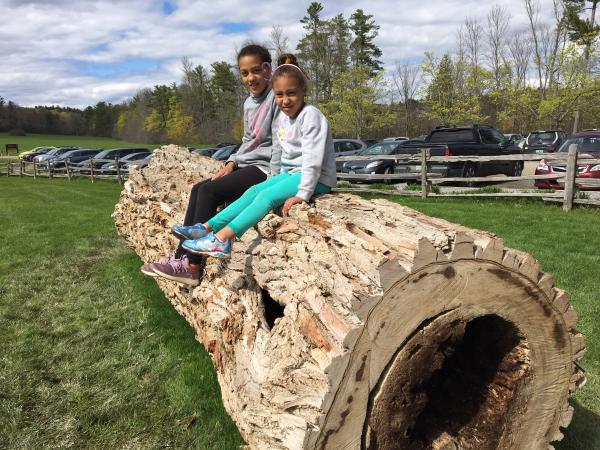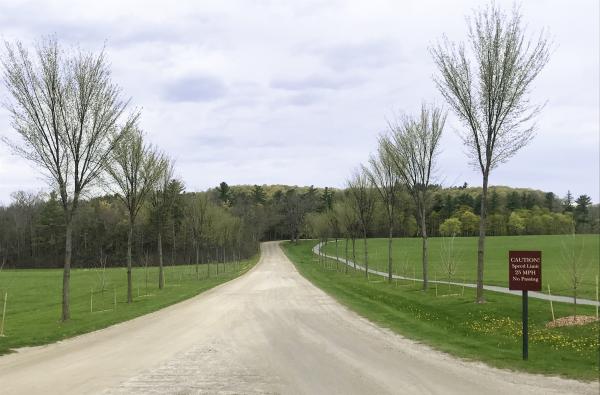Replanting Poplar Drive and Main Entrance Drive
This spring, as planned and promised, Eastern Cottonwoods were replanted along Poplar Drive, replacing the dead and dying trees that were taken down last fall. We planted 23 cottonwoods (populus deltoides “Siouxland”) as bare root saplings. Each new tree is about 10-12 feet tall and 1-¾ inches in diameter.
The trees should grow quickly—adding 1-2 feet in height a year—and form a good canopy within five years. Patricia O’Donnell of Heritage Landscapes, who developed Shelburne Farms' Historic Landscape Management Plan and oversaw the planting, says, “For now, our hope is that these new trees will settle into the soil well and put on some growth this year.”
In an earlier story, we shared how the wood of the original trees would find new life as tables and bowls. That is still true! In addition, we’ve kept two large sections of old, hollow trunk for children (and adults!) to explore, and to honor the lives and memories of these majestic trees. One trunk is on the Welcome Center lawn and the other is in the Children’s Farmyard. Each weighs more than five and a half tons!
More than a decade ago, we planted Princeton Elms along the allee because they are resistant to Dutch Elm disease, which destroyed the native Elms here back in the 1970s. Unfortunately, resistant does not mean immune, and we have already lost five of our Princeton Elms to the disease. Young native Elms in the forest nearby carry the virus, so we believe more Princeton Elms will eventually be infected.
To plan for this eventuality, we have planted the Sycamore trees. This native tree grows well here, looks magnificent, and lives a long time. (If you’re a local resident, you may know the huge one—over 200 years old—on Falls Road near the bridge in Shelburne). The concept is that the Sycamores will create an equally grand entrance to the Farm over time.
Working with nature and planning for the long-term is always full of twists and turns. We are doing our best to respect, adapt to, and foresee changes in the landscape.



